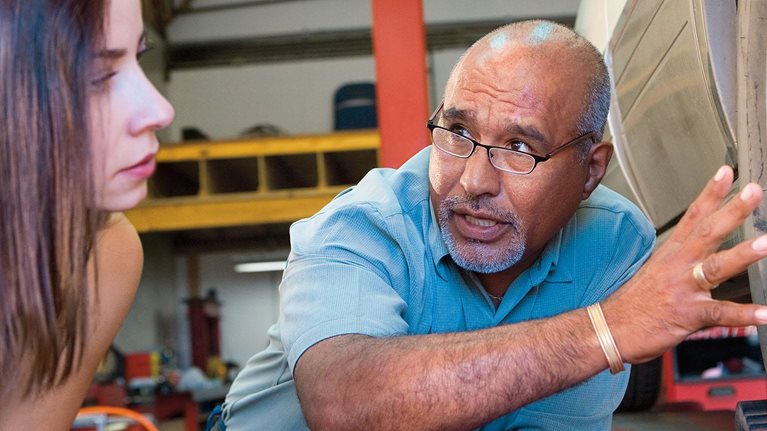The leader of McKinsey’s consumer digital-excellence initiative, Brian Gregg, hosted a recent installment of McKinsey’s Discussions on Digital podcast, a series that brings together digital leaders to explore emerging issues facing the business world. He led the discussion with StubHub CMO Jennifer Betka, Teespring CMO Robert Chatwani, McKinsey associate principal Dianne Esber, Mighty Hive CEO Peter Kim, and former CMO of Beats and current Digital VP, McKinsey Digital Labs Mark Phillips. What follows is an edited version of their conversation.
A golden age for marketing?
Brian Gregg, McKinsey partner and leader of consumer digital-excellence initiative: The marketer has never been under more pressure to drive growth and increase return on investment. On the other hand, the marketer has never had this much data or opportunities to connect with consumers. So I’m curious: In your own mind, is this a golden age for marketing?
Jennifer Betka, CMO of StubHub: We probably all agree that marketing is a mix of art and science, and from a science perspective, with all this data, I think it’s definitely the golden age. But when you really understand marketing as a mix of art and science, I just can’t agree that we’re in the golden age of marketing. There’s so much content being created—by users, by artists, by designers. And there’s a lot of competition for attention, and the demands of speed and immediacy demand that many things being produced don’t have artistic quality, or even data integrity.
Peter Kim, CEO of Mighty Hive: To me, it’s the fun age. We get to figure out meaty problems, like: How do you preserve the art while leveraging the science? How do you organize a company and execute a marketing plan in order to have real leverage provided by the new technologies that have come out?
Marketing’s big issue: Dis-integration
Robert Chatwani, CMO of Teespring: When I look at most organizations and CMOs and how their teams are structured, what I see now more than ever before is that these are disparate functions and not one holistic team. This is not only true in large companies. I’m actually also seeing the exact same thing happen now in early-stage consumer Internet companies.
Mark Phillips, Former CMO of Beats and current Digital VP, McKinsey Digital Labs: Actually, there are two big trends I see. The first one is integration. The thing I love about marketing now is that you can’t exclude me from products or finance, for example. I’m not a decision maker, but I’ve got to be involved in many areas. The thing I’ve found is that cross-functional collaboration really works, because at the end of the day, there’s one user, and you’ve got to give them a great experience.
Robert Chatwani: One of the most significant challenges for a fast-growing or complex enterprise is systems thinking, which is how you bring together disparate perspectives across an organization and align all of that to a customer-centric view. In a large enterprise, the challenge is competing priorities, with different groups that are all trying to solve slightly different objectives. While they may ultimately align to a common metric, these objectives are often inconsistent across teams.
Mark Phillips: This really is a culture question around decision making. We’ve all got growth challenges. And there’s always some key business metric that’s important. But what’s important is whether the management team is unified around a basis for making decisions and setting priorities.
The CMO’s role in owning the customer relationship
Brian Gregg: What’s the role of the CMO in terms of owning the customer and actually stewarding that relationship and journey?
Peter Kim: To me, marketing owns the conversation, which is all the interactions such as paid media, during the customer journeys and customer support. It has to be, because the opinion of the consumer is formed through all these interactions with the company.
Jennifer Betka: You know, when I was launching Sirius Internet Radio, I was working collaboratively with really brilliant engineers. I was in a marketing and interactive role. There was no product-organization group, so the marketing team had to define the requirements. We understood the voice of the user we were trying to sell to. We outlined the experience that needed to happen. We were able to talk about pricing and presentation and all sorts of interactive elements together.
But in my recent experience, there’s a tension that makes it very difficult for the marketer to balance being a promoter of the product and at the same time a promoter of meaningful user experience.
Peter Kim: Some of the things that we’ve done with some of our clients include using types of data that normally haven’t been used for marketing purposes in the past—because is a website the only way that a person can demonstrate interest? Of course not. So we started working with call centers because if somebody calls into a call center and says, “Hey, I’d like the pricing on XYZ product,” they’re probably pretty deeply interested. We started taking those phone numbers and then putting ads online based upon that phone number within 24 hours. Unsurprisingly, it worked.
That led to a deeper conversation of, “OK, now that we’ve made a small step forward in having the customer-support guys working with the marketing guys, let’s build off of that.”
Dianne Esber, McKinsey associate principal: But at the end of the day, there’s always this tension around who gets credit for the sale. How do you create the environment that supports folks working together?
Peter Kim: For me, I’ve found—and this may be a little bit too kumbaya—but I’ve literally pounded the table on behalf of the customer. If I’m working with a team that’s worth working with, that will be a persuasive argument.
The power of curiosity
Jennifer Betka: We lose the ability to be vulnerable when we’re in a business. You feel like you have to know everything, or you have to be the expert. And really, at the end of the day, I think what solves the connective glue is not being perfect; a lot of it is just being vulnerable enough to be curious enough to ask questions, because that’s how you form common understanding.
Mark Phillips: Here in Silicon Valley, we talk about pivots. I think we talk about it way too much, personally, because I think the consumer experience gets broken so badly when we do this too much.
But actually being able to always question and being curious is a natural thing, I think, for marketers to do. It’s a very hard thing to do in some of the early-stage start-ups, where you’ve got founders who thrive and survive on conviction. I’ve been in those meetings where people will say, “I started this business on a hunch. That’s my hunch.”
We’re missing the opportunity to create experiences. And I think that’s where thinking in terms of user journeys is really valuable. Because you can suddenly start going, “Did we actually, genuinely, create enough value on this process here?”
Peter Kim: Well, speed has obvious benefits. As a fan of HotelTonight, I can absolutely say I have definitely checked out in ten seconds and been happier for it. Speed for its own sake, though, is useless. But speed to increase the pace of innovation, to increase the rate of iteration, to increase the rate at which you can experiment and learn and therefore get closer to the ideal experience is crucial.
What is disruption, and what should it be?
Mark Phillips: What it comes down to at the end of the day is are you understanding and then being able to solve what the real problem is? Or have you actually just got an idea that you think you can make money from? It would be great to rephrase disruption. I think the phrase should be around genuine problem solving.
Robert Chatwani: I think a lot of the most successful business models are operating in very traditional industries: car services, hospitality, content distribution. Rather than entrenched companies worrying about how more innovative business models can attack their own sort of structure, I see plenty of opportunity for companies to begin reinventing that themselves.
An easy example to point to is Netflix killing their DVD business. They created some sort of a business unit or subsidiary that managed this process. But it was very forward thinking. They basically said, “How can we take our own business, really try to understand where the market is going to be in five to ten years, and begin to introduce ways in which we can be the ones who harness and take advantage of that development as opposed to being disrupted by other businesses?”
Peter Kim: I could not agree with you more. Companies have opened the door to being disrupted because they lost the customer narrative. They forgot why they were doing what they were doing. But big companies have a lot of advantages if they can keep hold of the narrative with the consumer.
Mark Phillips: How many chief executives and those in the C-suite genuinely look at themselves 100 percent honestly and go, I’m getting this right. I’m getting that wrong? That’s what we genuinely need to do a lot better.
Predictions
Mark Phillips: I think the biggest developments will be in automotive. I actually don’t think automotive will change a lot. But I think what automotive will change for a lot of other categories will be huge. So if you think of all on-demand services, they will be massively impacted by autonomous cars.
How will cities function? How will family units function? How will finance and insurance and lots of other really massive categories function?
Robert Chatwani: One of the things I really believe is going to change is the way I communicate with other people and the way I communicate and interact with my devices.
There is going to be a big role for artificial intelligence to actively push to me the things that I can predict I’ll need or want—just look at what Google is already doing with Google Now and traffic alerts and weather alerts or anticipating what my schedule looks like and starting to give me some very basic advice.
Peter Kim: I’m very excited about some of the things that are happening in biology right now. I’m a data geek. I love the idea of augmented reality and virtual reality and these types of things. But if we’re starting to monkey with fundamental biology, lifespan, life quality—those are huge questions we’ll need to answer soon.


